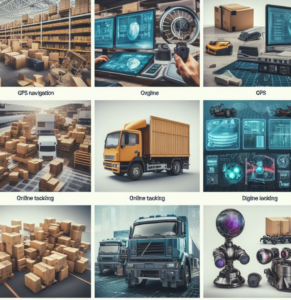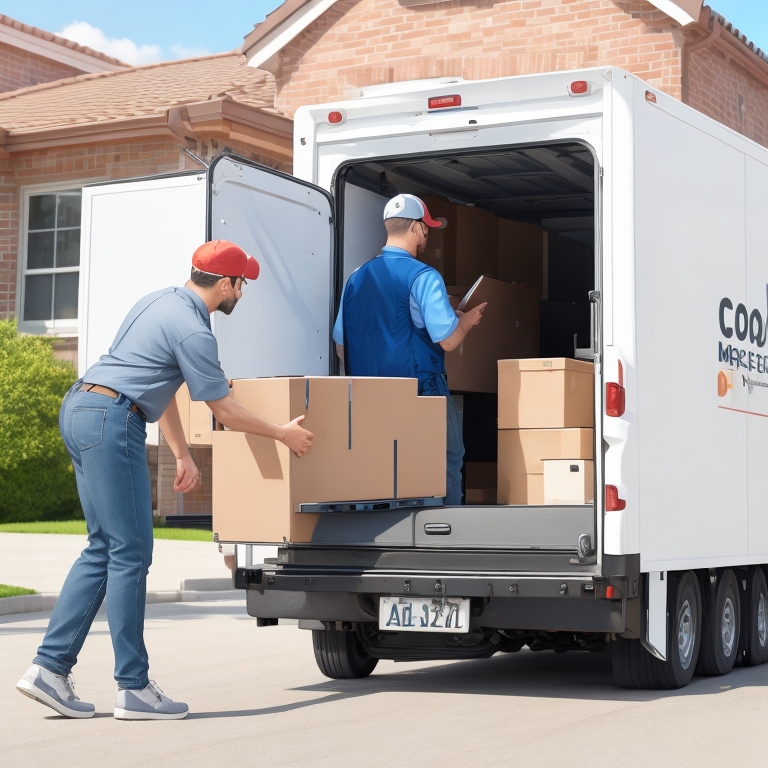Technology’s Impact on the Moving Industry
Moving apps have transformed the relocation process, streamlining the planning and organization stages. These applications serve as comprehensive tools, addressing a broad spectrum of moving-related tasks, thereby simplifying what is traditionally a complex activity.

Through inventory management features, users can effortlessly catalog their items. These applications often include barcode scanning capabilities and cloud-based systems to manage the inventory neatly. This efficient tracking of belongings ensures that all items are accounted for throughout the move, contributing to a smoother unpacking experience in the new home.
The selection and vetting of moving companies is another area where these applications prove beneficial. They provide platforms where users can browse through mover profiles, read community-generated reviews, and access detailed quotations. The ability to compare services on the go empowers users with the knowledge necessary to choose the best moving company for their budget and needs.
A standout benefit of these moving applications is their checklist functionality. These checklists are meticulously tailored to guide users through the myriad of tasks that come with relocating. The checklists are comprehensive, keeping track of everything from the need to change one’s address with government agencies and banks to the packing sequence that should ideally be followed for each room. This structured approach aids in keeping the moving process manageable and methodical.
Furthering the support offered, some apps also feature reminders and planning schedules that ensure crucial tasks are not left until the last moment. By breaking down tasks into timely actions, these applications reduce the potential for oversight and alleviate some of the stress that moving can bring.
The use of moving apps represents a leap forward in how individuals approach relocation. The combination of inventory management, service comparison tools, and detailed planning assistance addresses the core aspects of moving. Users benefit from a more organized move with reduced chances for error or loss, ultimately leading to a more positive moving experience. With these digital aids at their disposal, movers can navigate the process with increased confidence and control.
Logistics and Efficiency with Technological Tools
Logistics and efficiency are central to the performance of contemporary moving services, empowered by a suite of technological tools that transform the experience. On the actual day of a move, these advances come into play to smooth out the potential bumps on the road. GPS tracking has become an integral part of these services, offering both peace of mind and real-time data for customers. Knowing the exact location of their possessions at any moment reduces stress about the safety and arrival of their goods.
Moving companies have further embraced technology by leveraging fleet management software. This powerful software is instrumental in planning the most efficient paths for transport vehicles. It analyzes a myriad of variables, including current traffic conditions and the dimensions of the items being moved. By optimizing routes, companies are able to decrease transit times. The software also ensures that trucks are strategically loaded to maximize space and secure cargo, which contributes to lowering fuel consumption significantly. Consequently, a smaller carbon footprint is achieved, resonating with the values of eco-friendly clientele who prioritize sustainability.
The integration of advanced tools doesn’t stop there. Innovative virtual reality platforms now offer the possibility of a virtual staging experience. Clients can engage with a digital representation of their new home and experiment with the placement of their furniture. This technology acts as a pre-emptive planning resource, guiding customers in figuring out what belongings will be essential for their new setup and what can be discarded. Such pre-planning aids in reducing the time and effort involved in the physical setup of the new residence.
Advancements in technology enhance the planning phase and execution of moving services, saving time, cutting costs, and reducing the environmental impact. As these technologies evolve, they are set to refine the moving process further, delivering increased value to providers and clients in the logistics sector.
Post-Move Support and Technology Integration
After relocating, the integration of technology plays a significant role in the adaptation phase. Smart home technologies enable new residents to optimize their living spaces through the use of internet-connected devices. Tasks such as installing a security system, fine-tuning a programmable thermostat, or setting up smart lighting can dramatically increase the comfort and practicality of a new residence.
Applications that assist in initiating local utility services and in-home assistance bring ease to post-relocation duties. These tools aid users in becoming subscribers to essential services like electricity, water, and Internet. Many of these applications offer the option to arrange installation dates and engage with customer support from within the application itself, bypassing the need for multiple telephone conversations or physical visits.
Completing paperwork and updating records is another important step after moving. This includes changing one’s address, registering to vote locally, and arranging for area-specific amenities. Digital platforms are designed to consolidate these tasks, thereby simplifying the process for individuals as they integrate into their new neighborhoods.
The moving industry is continuously experiencing shifts and advancements in technology, serving as a valuable partner throughout the process. This technology increases operational efficiency, alleviates the strain of logistical tasks, and provides customers with a sense of assurance during their transition to new homes, significantly diminishing anxiety and difficulties. With ongoing technological progression, one can anticipate that the moving process will be enhanced further, evolving to become even more streamlined and accessible to users.
The future of residential moves hinges on the development and application of technology that can keep pace with the needs of relocating individuals. By embracing these tech-driven solutions, movers and clients can expect an improved experience that aligns with contemporary expectations of efficiency and ease.
Other posts
© 2025 Local Movers. All rights reserved.
